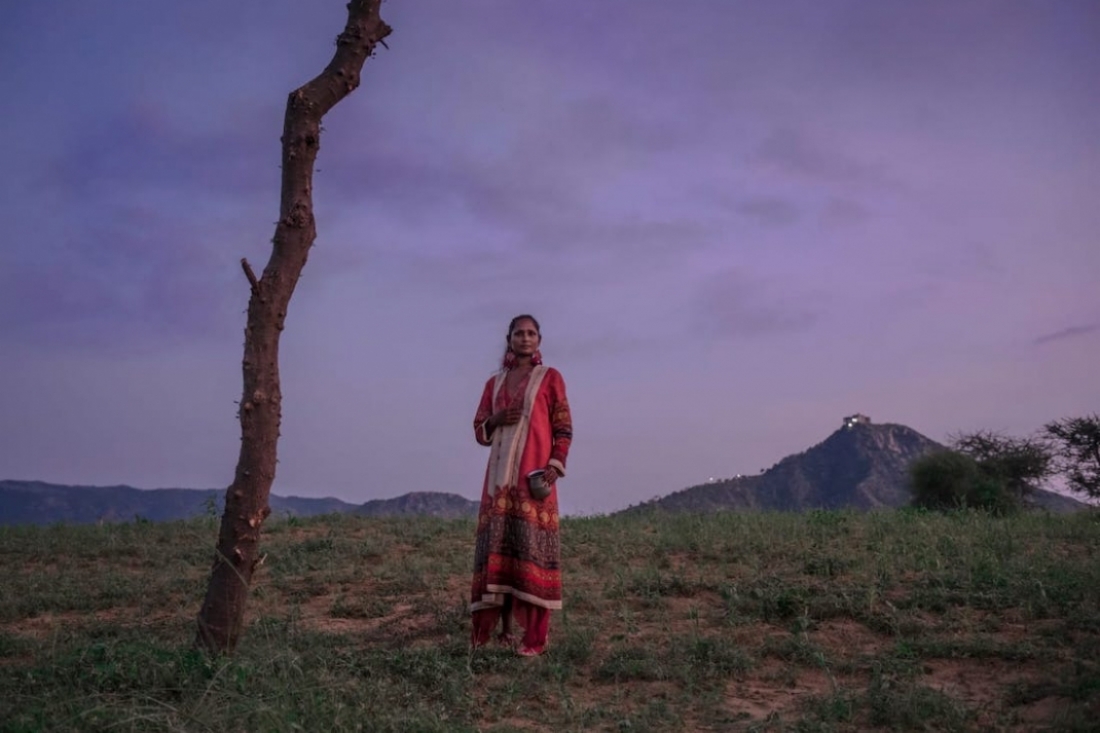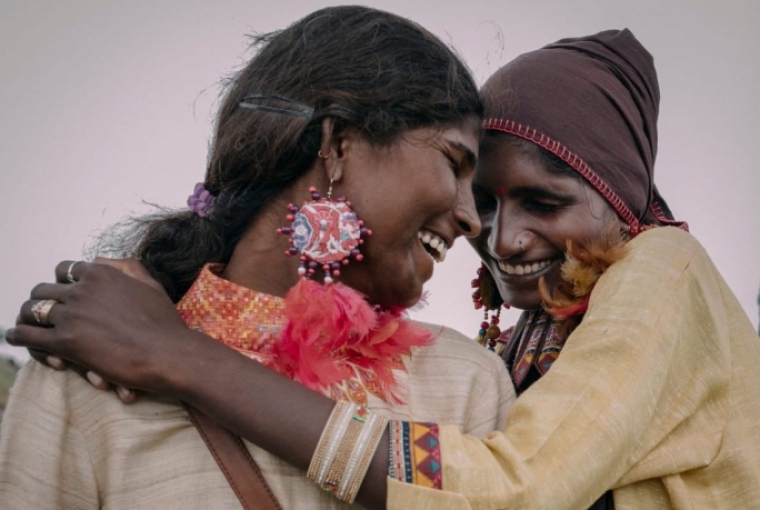

'The act of the photographer is closer to reading than it is to writing. They are the readers of the world,' said Italian photographer Ferdinando Scianna.
Scianna is known for his fashion imagery steeped in Sicilian life. His philosophy of taking fashion back to its natural settings resonates in India's hollowed alleyways with Nirvair Singh Rai. The 25-year old, like Scianna, is not a fashion photographer, to begin with. He is a reader and reporter at best. He reads everyday people and their everyday pains, and then glossy faces in glitzy lanes. His young catalogue spills with stills and films of men and women prancing and posing for the camera, actresses wearing expensive gowns, actors in tailored suits, girls wearing hats, girls with no hats, bright backgrounds, strobed collars, pretty laughs, sultry eyes, cutout jeans, models, brides and athletes; these with pictures of horsemen, dancers, tigers and snakes, men in prayer and men in love, women in burqas, priests and passerby, temples, mosques and monks, villages, seagulls, cats, turbans and umbrellas; all these.
Rai is also a dear friend. In his latest project, he reads across the sandy crescents of Pushkar, Rajasthan. As he travels and reads, he tries to experiment with his code of fashion iconography. ‘Invariably, when I am shooting people, whether it is documentary or commercial, I'm shooting inclusive of their attire, their aesthetic,’ he says. ‘I don't believe in tags in photography. I observe and shoot everyone and everything I see.’ In September last year, he photographed the Banjara tribe of the Kalbelias, the desert's traditional snake-charmers, and through them, explored the indigenous roots of fashion. It worked. It worked because he is not a photographer that only works in fashion.
The women he photographed - Anita, Supari, Santara, Sundari and Maya - almost all were young mothers except one, and one of them was as young as 20. They were sweet and very fine. Rai gave them clothes from a young designer named Ishita Verma whose showcase was called Dreamcatchers. The women adorned them loosely around their androgynous frames and fine sun-kissed skin. Much like their traditional garb, the fabrics were colourful, patterned and playful against the monochrome of the desert. He gave them heels to wear on the uneven floor of the desert. Yet, the images were not orchestrated, Rai says. ‘I just asked them to be as they are,’ he says. ‘I consciously didn't distort them into my version of them, but let them include our clothes in their ways and their lives instead.’

He photographed them around their dwellings, and let them be mothers, sisters and friends in the photographs. For a brief moment in time, he let them be children again. Sundar and Santra giggled after Rai showed them a picture. Maya, the youngest of the lot, slyly evading the sight of her in-laws, wrapped a snake along the contours of her body. He included their rings, their marriage rings, and necklaces and bangles, the symbols that mirror their nomadic lives. But what stood out were the heels. Unfamiliar to their feet in everyday life, yet not completely unknown thanks to mobile phones and films, the shoes bemused them. ‘Some were sceptical, some laughed,’ Rai says. ‘Others showed an unbelievable poise, even while crossing fences with a dancer's ease.’
His photographs are romantic and implied, but they are also less elaborate, without calculation, and less staged that most in the genre in our times. The setting, the scenery, the camel wagons are more than just a background in his story about the nomads. As Scianna would say, they are co-protagonists. They speak of the desert and the threads that have emerged from it. Having said that, Rai has only begun to scratch the surface with these photographs. He has the potential to explore the theatrics that clothes lend to the nomads' living, their silent days and busy ones, their culture, travel, their festivals, rituals and traditions. If clothes could speak, they would tell more than just of charm and colour and dance and music and moonlight. They would speak of movement, identity, expression, of displacement, sensuality, history, of belonging only to the dunes and time.

Nirvair Singh Rai
Text Sonali Prasad
Sonali has written for the Washington Post, Mongabay, Hakai, Guardian, Quartz, Esquire Singapore, and others. She is a former Pulitzer Traveling Fellow and Earth Journalism Grantee. She is currently an independent reporter working out of South and Southeast Asia.